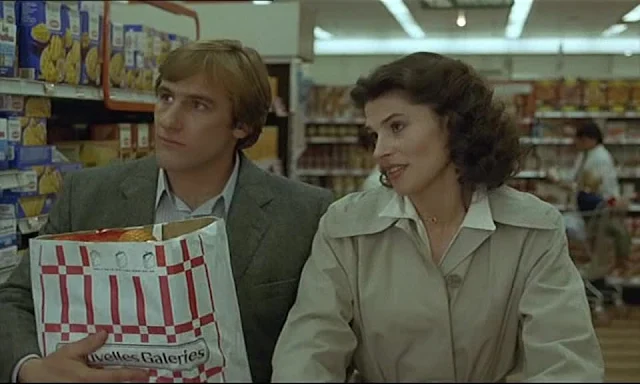 |
| Felicity Jones and Diego Luna in Rogue One |
Cassian Andor: Diego Luna
Galen Erso: Mads Mikkelsen
Saw Gerrera: Forest Whitaker
Bodhi Rook: Riz Ahmed
K-2SO: Alan Tudyk (voice)
Chirrut Îmwe: Donnie Yen
Baze Malbus: Wen Jiang
Orson Krennic: Ben Mendelsohn
Governor Tarkin: Guy Henry
Bail Organa: Jimmy Smits
Director: Gareth Edwards
Screenplay: Chris Weitz, Tony Gilroy, John Knoll, Gary Whitta
Cinematography: Greig Fraser
Production design: Doug Chiang, Neil Lamont
Music: Michael Giacchino
It takes a lot of work (and money) to sustain a myth. Rogue One, the first of the standalone (i.e., not an official Star Wars episode) films based on George Lucas's corpus of myth about a galaxy far away and a long time ago, doesn't really stand alone. It's there to plug a hole in the larger Star Wars narrative: How could the Empire have been so careless as to leave a critical vulnerability in the Death Star, so that Luke Skywalker could take advantage of it as easily as he used to bullseye womp rats in his T-16? It was, of course, an inside job, a bit of sabotage by an engineer named Galen Erso. So what we have in Rogue One is essentially Star Wars: Episode 3.5. I've got no problem with that, except that it hardly seems worth two hours and 13 minutes or $200 million to fill a plot gap. It also feels like a waste of a splendidly capable cast to create vivid and heroic characters only to kill them all off by the end of the movie. Or to reanimate (literally) an actor who died in 1994 to give the illusion of continuity between films: If we can accept that James Bond can be played by many actors, or that the entire crew of the Starship Enterprise can be "rebooted" for a new series of Star Trek films, why shouldn't we accept that someone other than Peter Cushing could play Grand Moff (here he's just a general) Tarkin? There's something macabre about superimposing a dead man's face on a live actor's, and I hope Guy Henry got paid well for playing Tarkin from the neck down. These objections aside, Rogue One is a well-played war movie, with just enough resemblance to real wars to make it somewhat unsettling: The scenes in the capital of Jedha have an eerie similarity to recent news footage coming out of cities in Syria and Iraq, and the combat in tropical Scarif evokes any number of war movies set in Vietnam or in the South Pacific during World War II. In fact, Rogue One may be the most visceral and depressing film in the Star Wars canon.
Watched on Netflix








